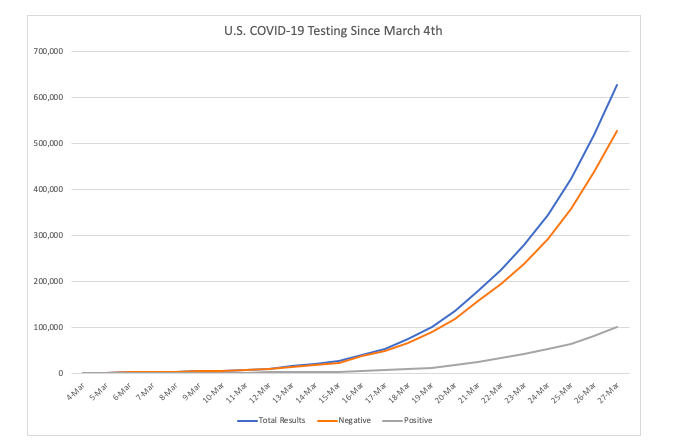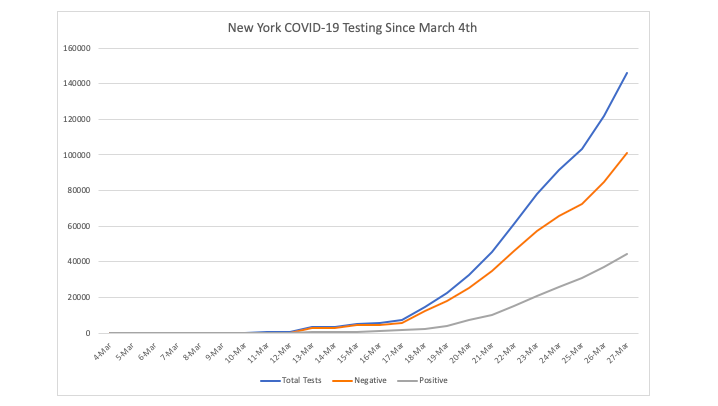
Did you feel that shift?
I did.
Each day something amorphous is growing clearer — an immense and looming thing, taking shape on the edge of the earth, casting an apocalyptic shadow. It will, I believe, continue to clarify, and that something is this: the greatest swath of destruction being cut by Covid-19 is not the infection itself but the annihilation of thousands upon thousands upon thousands of businesses and jobs and individual livelihoods — a feat accomplished by the only thing monstrous enough to be able to accomplish such a thing: the sheer force of governmental decree; mandates shutting down businesses overnight for any length of time the government so specifies; cities imposing curfews, road closures, sidewalk closures; hours-of-operation determined entirely by government edict; steep fines imposed upon individuals who’ve done no crime at all.
When you disrupt the division of labor long enough, you threaten the food supply. All societies nourish themselves by means of their food supply.
The whole structure of production is so complex and interdependent, operating, even in hampered form, by means of the elegant natural-order which laissez-faire creates (i.e. voluntary exchange), so complex and interdependent, I repeat, that when you start failing on just a few components – and this doesn’t take long – you create colossal problems: problems of such a complicated and intractable nature that they completely dwarf the problems created by Covid-19.
And yet even in spite of this unspeakable injustice, this utter atrocity exhibition, the daily headlines garnering the most attention are the sensationalized number of cases and number of deaths — despite the paucity of anything resembling complete data.
The root of this issue, like the root of most issues, is entirely epistemic.
It is for this reason that I’d like you to consider the following, which comes from Stephen C. Miller, of Troy University. It highlights a dawning realization that’s been forming on the horizon of my mind over the course of the past several days — beginning with my discovery of Stanford School of Medicine researchers Eran Bendavid and Jay Battacharya’s data, and then strengthened by the curious case of Iceland, both of which point to this conclusion: at least half of coronavirus carriers go symptomless, with many more having such mild symptoms that they don’t even connect it with the virus. The implications of this are far-reaching and significant.
In the words of Dr. Amesh Adalja, an infectious disease specialist at Johns Hopkins University, on the front-lines of this pandemic and a senior advisor in bio-terror prevention at Johns Hopkins Center for Health Security:
“Coronavirus is perhaps a little more fatal than seasonal flu. But not a lot.”
After two months of measuring and attempting to contain the coronavirus, the data supports one of the two following conclusions — and they both can’t be correct:
1. The virus is highly contagious, with the number of infected people doubling every three days.
2. The fatality rate is significantly higher than for the seasonal flu.
The reason these both can’t be correct is explained with great clarity in Stephen C. Miller’s recent article:
If this first claim is correct, then even though there are approximately 100,000 confirmed cases in the U.S., the virus has been spreading much more rapidly than we can test for it, if it has truly doubled every three days since January. If COVID-19 truly spreads that quickly, then the true number of infected in the U.S. is much higher — perhaps several million, as Stanford School of Medicine researchers Eran Bendavid and Jay Battacharya suggest in the Wall Street Journal.
If millions have been infected, then it logically follows that the current number of confirmed cases vastly understates the true number of infected. But even if only two million people have been infected (which would suggest a slower growth rate than the models projected), then the number of deaths as of Friday (just over 1,500) yields a fatality rate of just under 0.08 percent, or slightly less than the seasonal flu. [my emphasis]
If there are several million infected, then the fatality rate is a small fraction of the seasonal flu, perhaps as low as 0.01 percent. Those numbers would suggest that the U.S. is facing a new virus with flu-like symptoms, one that, like many viruses, is a dangerous threat to those with weak immune systems or respiratory problems. But ultimately it is milder and far less deadly than last year’s seasonal flu.[my emphasis]
The alternative is to believe that the fatality rate is as high as the reported numbers suggest, 4.5 percent globally, or about 1.2 to 1.6 percent in the U.S. (see the chart below). If so, then the virus is unusually difficult to transmit. If we just go by confirmed cases, then only about 80 thousand people have been infected in China, out of a population of 1.38 billion, or 0.006 percent.[my emphasis]
Or that so far, after over three months, the coronavirus has only infected 617,000 people globally, or roughly 0.008 percent of the population. If we believe the number of cases is more or less right, then the virus spreads much more slowly than imagined. [my emphasis]

The main difficulty at this stage is in knowing how rapidly the virus spreads.
The reason this is a crux is that that specific metric— which can only come from comprehensive testing — is the only metric which provides the true number of cases; and at this point, the virus spreads more rapidly than we’re able test for it. Thus, without knowing the true number of cases, we cannot accurately calculate the true death rate.
Let me repeat that:
Without knowing the true number of cases, we cannot accurately calculate the true death rate.
I ask you to please process that.
The progress in testing, however, such as it’s been, has cast light on both questions: the spread of the virus and its lethality.
This new light, while not conclusive, is undeniably suggestive:
The chart above shows in no uncertain terms that as testing has expanded, the fatality rate has plummeted.
The chart below shows the growth in testing and the portion of those tests which have been positive. The latest data on testing disclose that across America, roughly 16 percent of administered tests come back positive, though in New York the number of positive tests is over 30 percent (see the third chart).


The charts suggest that New York State either has a higher infection rate than the rest of the country (which is plausible given the higher population density), or that testing in New York has been even more focused on the seriously ill than is the case nationally. While the former is likely true, there is also evidence for the latter: New York’s hospitalization rate for confirmed cases (19%) is five percent higher than the current national average (14%).
So which is it, is the virus spreading very rapidly or is it especially deadly?
Given what we know about how similar viruses spread, it seems reasonable to believe the virus spreads more rapidly than the testing data indicate, and that the true number of cases is many times larger than 100,000. The infected are likely in the millions, but the rationing of tests prevents us from knowing the true number. In any case, that means the death rate is vastly overstated, and likely even lower than what has been typically reported for the seasonal flu. But there is also reason to believe that the coronavirus, while highly contagious in the same sense that many common viruses are, is not really more contagious than the seasonal flu. To believe that, we would have to believe the total number of infected is in the tens of millions nationally, even with the social distancing measures in place.
(Source)
Meanwhile, emerging ideologies continue to swell while others, bankrupt from the beginning though never actually recognized as such (largely because of the overwhelming effectiveness of certain propaganda machines), have been punctured — deflated almost over night:
“I’m thinking in particular of the variety of environmentalism that eschews functioning toilets and faucets and expresses loathing of consumer culture. The plastic bags are now back at check-out counters, the toilet paper aisle is empty, and ‘impossible burgers’ sit on the shelf unbought. Yes, meat is back. So is cleanliness. It turns out the deep green ideology was a luxury good consumable only in peace and prosperity…. Pundits with no previous knowledge of anything medical much less epidemiological who were cocksure that this disease was the new Black Death. They couldn’t wait to explain it to the rest of us. And [among millennials] in the millenarian press, we heard that this is proof of the coming rapture, god’s vengeance against a sinful world, the fulfillment of prophecy….”
(Link)

2 Replies to “Covid-19: Not a Virus to Vanquish but a Philosophy by which to Live”